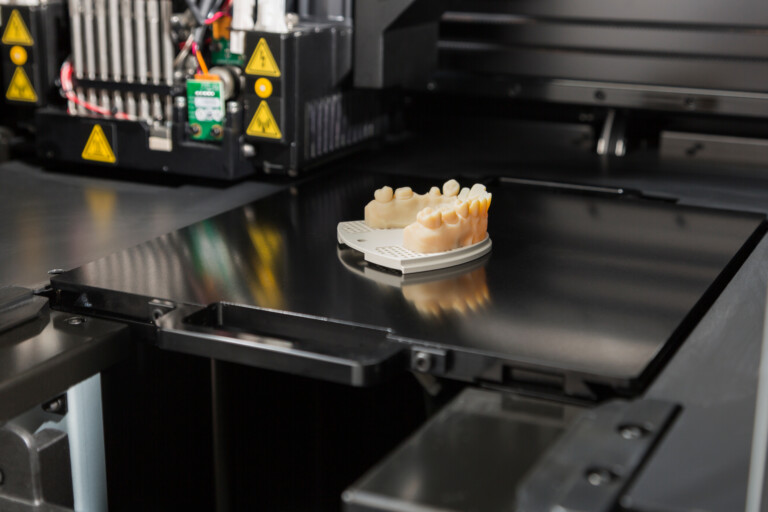We have all heard how 3D printing is revolutionizing the industry. 3D printers are changing the way dentists operate their offices, and revolutionizing the traditional relationships between dental practices and labs that construct molds, models, aligners, and dentures. More and more, these objects are being made in-house.
We’re not here to repeat the familiar refrains. We are here to tell you the 5 things you won’t be doing with a 3D printer.
5 things you won’t be doing
Dentistry has undergone a transformative phase with the advent of 3D printers, enabling dental professionals to fabricate various tools and components within the confines of their offices. Gone are the days of lengthy waits and messy procedures. Here are five traditional aspects that a dentist’s office can now bypass, all thanks to the integration of these cutting-edge 3D printing technologies.

1. Use External Suppliers for Specialized Tools
In the past, dentists had to rely on external suppliers for specific tools, leading to inevitable delays. However, the implementation of 3D printers allows for the in-house production of specialized instruments, streamlining the dental procedures and minimizing patient waiting time.
2. Create Models Using Uncomfortable Impressions
Gone are the days of enduring uncomfortable and messy molds of your teeth. 3D printers enable dentists to generate accurate and detailed tooth models without subjecting patients to the cumbersome traditional impression methods, providing a more convenient and efficient experience.
3. Schedule Multiple Visits for Custom Crown Fabrication
Previously, acquiring a custom crown for a damaged tooth necessitated multiple dental visits. Now, with the aid of 3D printing, dentists can swiftly produce tailor-made crowns on-site, reducing the overall treatment duration and ensuring a prompt and seamless restoration process.
4. Have a Waitlist for Personalized Dentures
The cumbersome process of temporary denture usage during the wait for customized ones is now obsolete. Thanks to 3D printing, dentists can efficiently create personalized dentures, eliminating the need for interim solutions and expediting the patient’s journey towards a comfortable and permanent oral solution.
5. Make Patients with Broken Braces Components Wait
Patients with braces often encounter difficulties due to the occasional breakage of small components like rubber bands and wires. However, with the integration of 3D printers, dental professionals can swiftly fabricate these intricate parts on-site, enabling patients to resume their daily routines without enduring prolonged inconveniences.
In essence, the incorporation of 3D printers within dental practices has ushered in an era of unprecedented convenience and efficiency, drastically enhancing the overall patient experience. With these remarkable advancements, the dental landscape is continually evolving, promising a more streamlined and patient-centric approach to oral care. The next time you visit your dentist, you might just witness the marvels of 3D printing technology firsthand.
Learn more about what you won’t be doing.
Benco Dental can help offer an easy introduction to the cutting-edge, high-tech world of 3D printing. There’s easy and affordable ways for you to expand what you can offer for your patients. Learn more about your options here, or contact an Equipment Specialist.


